Ants Go Marching One by One: An investigation on the impact of rain on ant tunnels
By Tammera J. Mittelstet
Target Audience
Prekindergarten and Kindergarten students
Estimated Time
45 minutes for five days
Overview
Over the course of a 5-day school week, students will develop an understanding of the anatomy and behaviors of ants and participate in a structured inquiry about natural phenomenon (rainstorm) and its impact on an ant’s ecosystem. Students will work as a class and develop a KWL (Know, What to Know, Learned), experience six work stations as science teams, and perform a structured inquiry. Throughout the stations, students will label the parts of ants, make ant behavioral observations, develop empathy for ants, and perform a structured inquiry.
Background and Introduction to Study Insect
Ants are social insects from the family Formicidae. There is an estimate of 22,000 ant species, of which over 12,000 ant species have been identified worldwide. The ant is one of the world’s strongest creatures in relation to its size. Ants can be found on every continent but Antarctica.
Ant lifespan:
Ants are the longest living insects. Queen ants can live up to 30 years, the longest of any insect. When a queen ant dies, the whole colony usually dies within a few months. Worker ants live for 1 to 3 years. Drones live only a few weeks.
Types of colonies:
An ant colony has several tunnels and “rooms.” Ants bring leaves, crumbs and dead insects back to the colony for food. Red fire ants build mounded ant hills. Carpenter ants build nests in logs or houses; they chew through wood to make their nests.
Ants also divide up the work of the colony. The Queen is the largest and longest lived of the ants in the colony and her responsibility is to lay eggs. Then there are King ants, which mate with the Queen. The rest of the colony are all females (and daughters of the Queen) who serve as workers. They collect food, feed the Queen and young, clean the nest, and defend the colony. Depending on the type of ant, the workers might all be the same size or there may be larger sized workers, known as major workers, and smaller sized workers, known as lesser workers. These different sizes often have specific responsibilities within the colony.

Ant Behavior:
Ants are social insects. They hold the record for the fastest movement in the animal kingdom. Ants can carry 20 times their body weight. They can bite and/or sting, but it’s not fatal to humans.
Next Generation Science Standards
Interdependent Relationships in Ecosystems: Animals, Plants, and Their Environment
Students who demonstrate understanding can:
|
K-LS1-1. |
Use observations to describe patterns of what plants and animals (including humans) need to survive. |
|
K-ESS2-2. |
Construct an argument supported by evidence for how plants and animals (including humans) can change the environment to meet their needs. |
|
K-ESS3-1. |
Use a model to represent the relationship between the needs of different plants and animals (including humans) and the places they live. |
|
K-ESS3-3. |
Communicate solutions that will reduce the impact of humans on the land, water, air, and/or other living things in the local environment. *
|
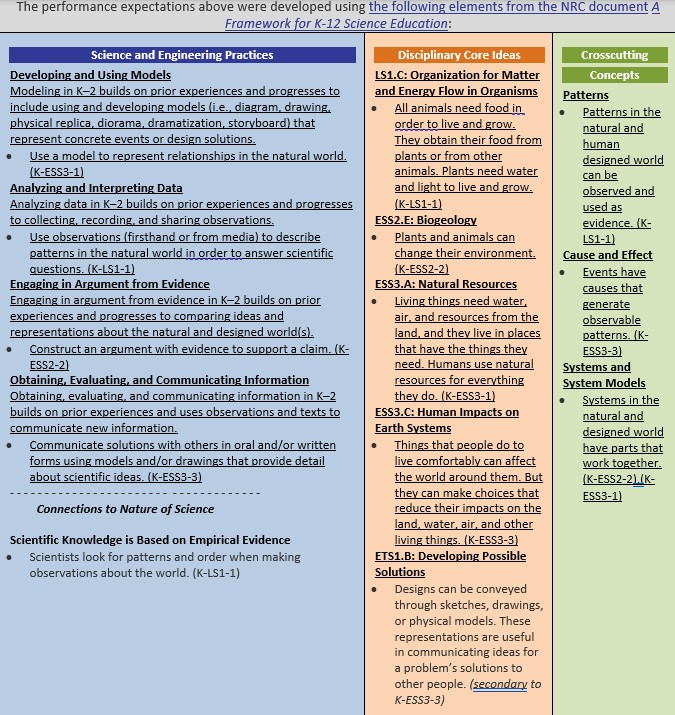
Learning Objectives
Students will be able to label the parts of an ant.
Students will observe the behaviors of a colony of ants.
Students will make a three-dimensional model representing an ant.
Students will participate in a structured inquiry about the impact of rainfall on ant colony tunnels.
Teacher Lesson Plan Instructions
Lesson Important Concepts
The Anatomy of an ant
Behavior observations
Ant colony tunnel structures
Impact of environmental rain on Ants
Materials
The book and/or a video of reading Hey Little Ant by Phillip M. Hoose, Hannah Hoose, and Debbie Tilley
Seven ant farms
Water
Eye dropper
Playdoh
Pipe cleaners
Wiggly eyes
Hasboro Cuties Board Game pieces
Books about Ants
Ant Science Notebook
Sand water table
Popsicle sticks
Projector/elmo
Overhead video screen
Schedule of Lesson Day 1-5
Day 1:
Opening Activity to week long study of Ants:
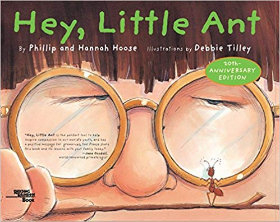
Read the book Hey, Little Ant by Phillip M. Hoose, Hannah Hoose, and Debbie Tilley and then have a class discussion about the book. Ask students what they know about ants and begin to fill in the KWL chart.
Review info for Teacher: This book provides a dual perspective on whether an ant should be squished. The viewpoint from the ant itself and the view point from the boy. Throughout the book the boy and ant discuss back and forth whether the ant should be squished. In the end the author leaves the conclusion up to the reader on what should take place. This book enables great debate between young children and the opportunity to stand in another person (ants) shoes and provides a unique opportunity for children to write the ending to a story that supports their viewpoint on the dilemma.
Start of class KWL chart:
|
K-Day 1 |
W-Day 2 |
L-Day 3 |
|
What do we know about Ants? |
What do we want to learn? |
What did we learn? |
|
|
|
|
Introduction of Class-wide Experiment:
The teacher and students are going to do a class-wide science experiment. The goal is to observe what happens to ants and their colonies when it rains outside. This inquiry will take place once a day for five days. First, ask students what they think happens to ant colonies when it rains. Have students make a hypothesis (or prediction) about how long they think it would take the ants to rebuild their tunnels? Have students break up into scientist groups of 4 students. Each group will be responsible for a different ant farm. Then have students observe their groups’ ant farm. They will be responsible for counting the amount of water drops (the rain), using an eye dropper to put water into the ant farm, it takes to destroy the ant tunnels. Then each group will observe their ant farm to see how long it takes for the ants to rebuild their tunnels. Questions to ask the students: Did the ants rebuild their tunnels in the same way? How did the ants react to the water? Have students explain how they react to natural phenomenon like raining. Then lead a discussion on how raining impacts ants vs. humans differently. Connect this inquiry to the book Hey, Little Ant.
Teacher Notes: On the first day students will observe the ants and tunnels (before they “rain” on their ant farm) and record their observations. This will serve as your control. You will then perform the first trial of the inquiry with all the students by having them “rain”. In the morning, have each student group “rain” on their ant farm, and once all student groups have “rained” on the ant farm, set a timer to have students observe their farm to record their data each hour. You will repeat the same procedures for Day 1, 2 and 3 with different quantities of rain. Your students will determine the amount of water drops they use and record that on their data collection sheet. The 4th day’s inquiry is flooding the tunnels, so it may take longer for the ants to rebuild the tunnels and you may need to observe that on the fifth day as well.
|
5 hours
|
|
|
|
|
|
|
4 hours |
|
|
|
|
|
|
3 hours |
|
|
|
|
|
|
2 hours |
|
|
|
|
|
|
1 hour |
|
|
|
|
|
|
Hours that it takes for colony to rebuild tunnels |
Ant Farm- Control-No Rain observation Day 1 |
Ant Farm – Trial 1 Day 1 |
Ant Farm – Trial 2 Day 2 |
Ant Farm – Trial 3 Day 3 |
Ant Farm- Trial 4 Flooding Day 4 & 5 if needed |
Amount of Water: Ant Farm 1_Observation No Water_Ant
Farm 4 ____________________
Ant Farm 2 __________________
Ant Farm 5 ____________________
Ant Farm 3__________________
After beginning the inquiry, review the different stations and what the students will be doing in each over the next three days. Break students up into scientist groups of 4; each day (2-4) each group will work through two stations.
Day 2– (5 minutes)- Teach the students the Head, Thorax, Abdomen song. Repeat the Inquiry for Trial 2. Meet as a class and answer the KWL“What do we want to learn?” question. Then send students to their stations for 30 minutes. During the last 10 minutes have students share what they have learned and observe in the class experiment in a whole group discussion.
Day 3– Have your students perform Inquiry Trial 3. Then, have students discuss their Day 1, 2, and now three findings within their science team and then share out to the class. Following the discussion have each science team complete two more stations.
Day 4– Students will perform Inquiry Trial 4 (Flooding). As a class discuss what the term flooding means and then remind students to count their drops as they simulate a flash flood. Next, students will discuss their findings within their science team and share out to the class. Following the discussion have each science team complete two more stations.
Day 5-Have students finish their observations of their ant farm. Have students review what they have learned as a science team and then as a class. Students will fill in the remainder of the KWL chart. With the use of Author’s chair have students will share their endings to the story of Hey, Little Ant. During free choice reading time in your classroom meet with each student independently about what they have learned about ants throughout this inquiry.
Workstations:
Day 2-4: Stations as Science Teams
Rotate groups over 3 school days- two stations X 15 minutes each for a total of 30 minutes per day.
Station 1: OBESERVATION OF ANT BEHAVIOR- In this station, students will observe an ant farm and notice the behaviors of the ants. Then they will draw or write in their science notebook what they observed.
Station 2: ANATOMY OF AN ANT- Diagram of an Ant. Students will be given the opportunity to draw a diagram of an ant, labelling the mouth, eyes, antenna, legs, head, thorax, and abdomen.

Station 3: TRACING OF ANT TUNNELS-Students will project the ant farms on the class overhead screen using an Elmo (or a flashlight behind the ant farm held by one student) and then use paper to trace the ant tunnels that are created by the ants. With the extra minutes remaining have students use popsicle sticks to trace and make a replication of the ant tunnels in wet sand at the sand water table.
Station 4: MODEL OF AN ANT- Students will create a three-dimensional model by first using the pieces of the Cootie game by Hasboro. Then they will create their own version by using playdoh for the head, thorax, and abdomen; pipe cleaners for legs and antenna; wiggly eyes for eyes; and a red pipe cleaner for a mouth. Then students will take a picture of their model with a camera and the educator will print them out to be glued into the students’ science notebooks.
Station 5: RESEARCH OF ANTS- Students will be introduced to many books about ants and they will find new information and record it in their science notebooks.
Station 6: WRITING STATION- Students will watch the video version of the book Hey Little Ant and then finish the ending to Hey Little Ant, answering the question “What should the child do?” In their science notebook, students will draw a picture of what will happen and write what they think the ending should be.
Science Notebook:
See attached Science Notebook pages. Each student will create his or her own science notebook about ants.
Learning Assessment
Students will be asked individually to:
Point out and explain the parts of the anatomy of an ant. They will be considered passing if they get 80% of the answers correct.
Explain how “rain” impacts the ant tunnels and how the ants fix it.
References
Next Generation Science Standards-https://www.nextgenscience.org/.
Nebraska Department of Education-https://www.education.ne.gov/.
Amazon-https://www.amazon.com/s/ref=nb_sb_noss_1?url=search-alias%3Daps&field-keywords=ants.
University of Nebraska-Lincoln Entomology website: https://entomology.unl.edu/scilit/basic-insect-morphology.
Pest World for Kids https://pestworldforkids.org/pest-guide/ants/.
National Geographic Kids-https://www.natgeokids.com/uk/discover/animals/insects/ant-facts/.
Science Kids-http://www.sciencekids.co.nz/sciencefacts/animals/ant.html.
Carolina Biological Supply-https://www.carolina.com.
Science Notebook Pages: Copy pages and then cut the pages in half and staple on the side to make the books.

Name ___________
Station 1: Observation of Ant Behavior. Draw a picture of what you see the ants doing.
Station 2: Anatomy of an Ant- Diagram of an Ant. Draw a diagram of an Ant and label its parts.
Station 3: Tracing of Ant Tunnels. Place your sheet of paper on the Ant Farm and trace the tunnels.
Station 4: Model of an Ant
Station 5: Research of Ants
Write three things you learned about ants.
1.
2.
3.
Station 6: Writing Station-Finish the ending to Hey Little Ant. How should the story end?
Extra page for gathering more information
|
K-Day 1 |
W-Day 2 |
L-Day 3 |
|
What do we know about Ants? |
What do we want to learn? |
What did we learn? |
|
|
|
|
|
5 hours
|
|
|
|
|
|
|
4 hours |
|
|
|
|
|
|
3 hours |
|
|
|
|
|
|
2 hours |
|
|
|
|
|
|
1 hour |
|
|
|
|
|
|
Hours that it takes for colony to rebuild tunnels |
Ant Farm (Observation-Control) Day 1 |
Ant Farm Trial 1 Day 1 |
Ant Farm Trial 2 Day 2 |
Ant Farm Trial 3 Day 3 |
Ant Farm Trial 4 (flooding) Day 4&5 |
Amount of Water: Ant Farm 1_No Water Observation__Ant Farm 4 ____________________
Ant Farm 2 __________________Ant Farm 5 ____________________
Ant Farm 3_________________
Potential Books for the Research Station:
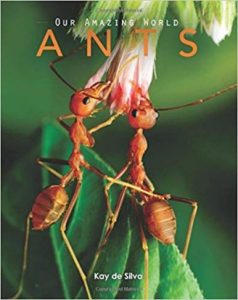
Ants: Amazing Pictures & Fun Facts on
Animals in Nature (Our Amazing World)
January 14, 2016
by Kay de Silva (Author)
 Ants: Amazing Facts & Pictures for Children on These Amazing Creatures (Awesome Creature Series)
Ants: Amazing Facts & Pictures for Children on These Amazing Creatures (Awesome Creature Series)
Jan 29, 2017

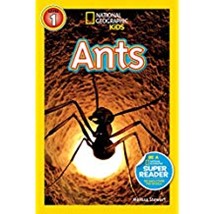 National Geographic Readers: Ants
National Geographic Readers: Ants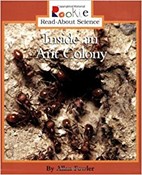 Inside an Ant Colony (Rookie Read-About
Inside an Ant Colony (Rookie Read-About 